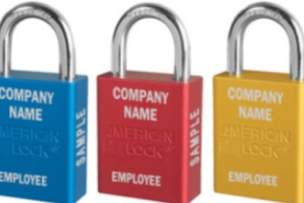Every year, OSHA publishes a list of the Top 10 violations. Many of them deal with the construction industry. For this article, we take a close look at the 2018 violations that most apply to “general industry,” which include: hazard communication, respiratory protection, lockout/tagout procedures, machine guarding and powered industrial trucks.
As detailed by associate editor Kevin Druley in Safety and Health magazine, in 2018, Nox US LLC in Ohio was fined $514,236 for five willful and two serious violations, including violations of lockout/tagout standards. Douglas Stephen Plastics Inc. in New Jersey was fined $435,679 for serious, willful and other-than-serious violations, including violations related to machine guarding and personal protective equipment standards.
Beyond the financial cost, failing to comply with OSHA regulations can endanger employees. The Nox US LLC fines came after one worker’s hand was crushed and another lost part of two fingers.
How can manufacturing companies avoid becoming one of the statistics released each year when OSHA announces its list of top 10 violations? Here are a few suggestions for violations of the general industry standards that are on the list:
Hazard Communication Standard
The OSHA hazard communication standard (CFR 1910.1200) is designed to protect workers from chemical hazards in the workplace. In 2018, there were a total of 4,537 violations.
What Goes Wrong
The most common citations were for failure to develop, implement and maintain a written hazard communication program (1910.1200(e)(1)) with 1,510 violations; failure to provide employees with information and training on hazardous chemicals in the workplace (1910.1200(h)(1)) with 1,167 violations; and failure to maintain safety data sheets for all hazardous chemicals (1910.1200(g)(8)) with 496 violations.
Are your hazard communications current? Read how to catch up.
What to Do
OSHA provides several resources to help employers develop hazard communications. These include a fact sheet, guidelines for compliance and a sample hazard communication program. In an article for Industrial Safety & Hygiene News, Greg Duncan offers six steps for implementing an effective program and avoiding costly fines.
“Approaching your HCS program as an ongoing responsibility, rather than just a one-time requirement, helps prevent you from becoming just another citation statistic on the agency’s list of top violations,” Duncan writes.







Talk to Us!
I would like to have someone to come to our facility for OSHA Training Classes.
16Please email us your contact info at BetterMRO@MSCDirect.com to connect on training.
16Leave a reply
Your email address will not be published. Required fields are marked *